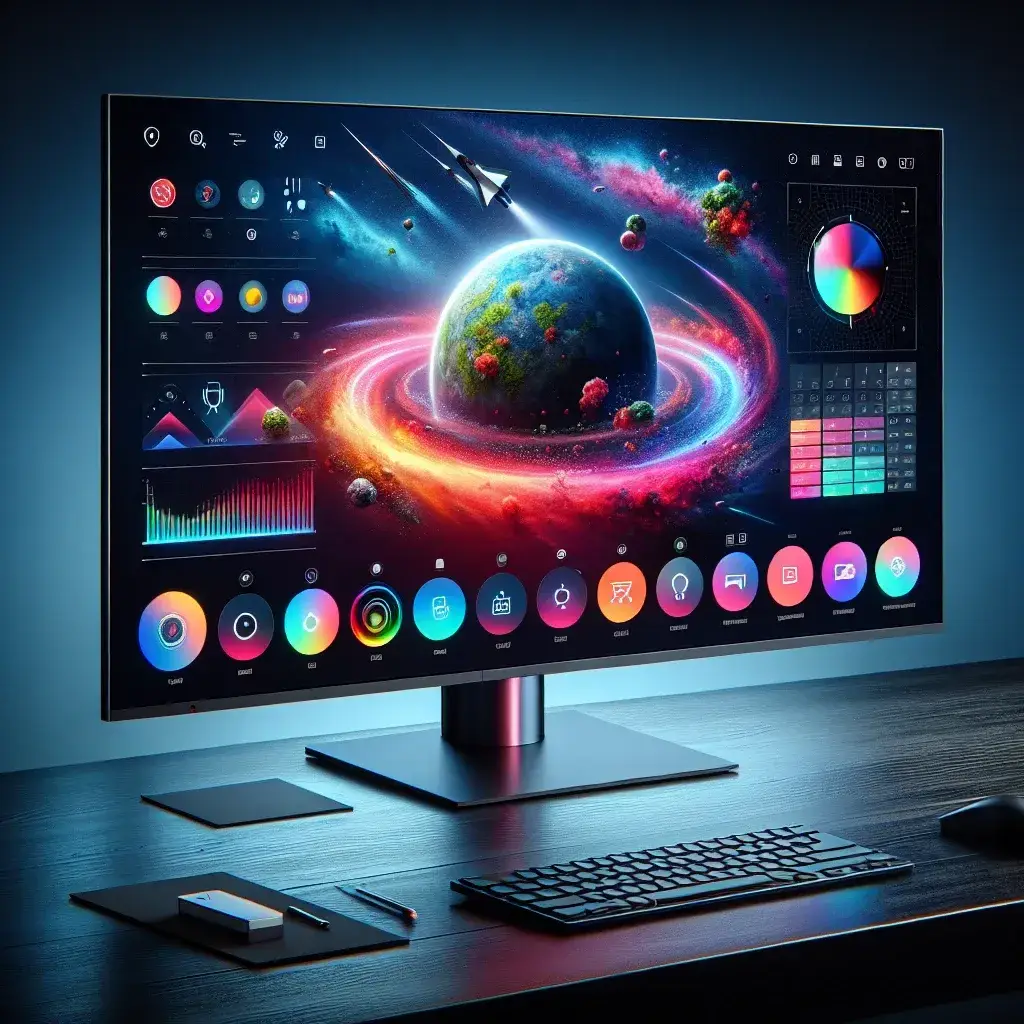Smart OLED monitors represent the future of display technology, combining the cutting-edge attributes of OLED screens with advanced smart functionalities. This new generation of monitors promises to deliver superior image quality, enhanced user experience, and innovative features that set them apart from traditional displays.
Understanding OLED Technology
OLED stands for Organic Light Emitting Diode. Unlike traditional LCD displays, OLED monitors do not require a backlight to illuminate the screen. This is because OLED panels consist of organic compounds that emit light when an electric current is applied.
| Feature | OLED Monitor | LCD Monitor |
|---|---|---|
| Light Emission | Self-emitting | Backlight required |
| Contrast Ratio | Infinite | Limited |
| Black Levels | True Black | Grayish Black |
| Color Accuracy | High | Moderate |
| Viewing Angle | Wide | Narrow |
Key Advantages of OLED Monitors
- Superior Contrast and Black Levels: OLED displays are known for their ability to deliver true black levels and an infinite contrast ratio, enhancing the depth and realism of images.
- Vibrant Colors: The technology provides exceptional color accuracy and vividness, making for a more immersive viewing experience.
- Thin and Flexible Design: OLED panels can be thinner and more flexible compared to their LCD counterparts, allowing for sleeker monitor designs.
- Faster Response Times: OLED monitors typically offer quicker response times, which is beneficial for gaming and high-speed video playback.
What Makes a Monitor “Smart”?
Adding “smart” functionalities to a monitor involves integrating features that enhance usability and connectivity. These features often include built-in operating systems, internet connectivity, and various smart applications.
Top Features of Smart OLED Monitors
- Internet Connectivity: Smart OLED monitors often come with Wi-Fi or Ethernet capabilities, allowing direct web access.
- Integrated Operating Systems: Some models feature built-in operating systems such as Android, enabling users to install apps, browse the internet, and use productivity tools without needing a separate computer.
- Voice Assistants: Smart monitors are increasingly incorporating voice recognition technologies like Amazon Alexa or Google Assistant, providing hands-free control and management.
- App Ecosystem: Access to a wide range of applications, from streaming services like Netflix and Hulu to productivity apps like Microsoft Office.
Comparing Smart OLED Monitors to Traditional Monitors
When choosing between a smart OLED monitor and a traditional monitor, it’s essential to consider the specific needs and preferences of the user.
| Aspect | Smart OLED Monitor | Traditional Monitor |
|---|---|---|
| Connectivity | Wi-Fi/Ethernet | Requires external device |
| Usability | Standalone functionality | Relies on connected devices |
| Flexibility | High (due to apps and OS) | Low |
| Voice Control | Available | Not available |
Applications and Use Cases
Smart OLED monitors can be used in various settings and for multiple purposes. Here are a few notable applications:
Office and Productivity
With built-in productivity apps, smart OLED monitors can serve as standalone workstations. They offer superior visual clarity for document editing, presentations, and data analysis, enhancing overall productivity.
Entertainment and Media
Smart OLED monitors provide an excellent platform for streaming movies, playing games, and enjoying high-definition content. The superior display quality and smart features such as voice control make for a highly immersive entertainment experience.
Creative Work
For professionals in graphic design, video editing, and photography, the color accuracy and wide viewing angles of OLED monitors are invaluable. The ability to directly access creative software and tools further enhances their utility.
Gaming
Gamers benefit from the high response times, low input lag, and vibrant displays offered by smart OLED monitors. Features such as game mode and customizable settings can further enhance gaming experiences.
Future of Smart OLED Monitors
The technology behind smart OLED monitors is continuously evolving, promising even more advanced features and improved performance in the future. Innovations such as augmented reality (AR) capabilities, even slimmer designs, and enhanced connectivity options are on the horizon.
Conclusion
Smart OLED monitors are set to transform the way we interact with digital content. Combining the unmatched display quality of OLED technology with the convenience and functionality of smart features, they are an ideal choice for a wide range of applications from professional work to entertainment. As the technology continues to advance, we can expect these monitors to become even more integral to our daily digital experiences.

